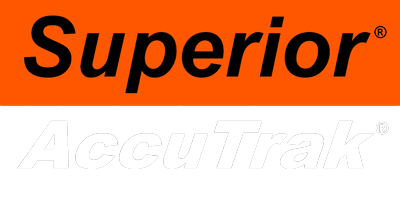How to Grease a Bearing with the VPE-2000
HOW TO GREASE A BEARING
Equipment needed:
1. Grease Gun
2. Appropriate Grease for the application
3. Zerk Fitting Unplugging Tool
4. Center Punch (Simple or Automatic)
5. Oil resistant permanent marker
6. IR Thermometer (Having Min, Max, Diff, Average)
7. VPE-2000 Kit
GREASING PROCEDURE
1. The bearing MUST be moving.
2. Locate a spot on the bearing housing or pillow block that is easily accessible.
3. Clean all dirt from the area.
4. Using the center punch make a small mark at the point of measurement.
5. Draw a circle around the mark or otherwise mark the area.
6. Using your IR Thermometer measure the temperature at the mark and make a note of it. Use the MAX or AVE Functions.
7. Put the 6” solid touch probe on the VPE-2000 and tighten with the wrench so it is snug (Do Not Over Tighten).
8. Wear the headset and your Hard Hat and plug the headset in the VPE-2000.
9. Turn the VPE-2000 ON.
10. Select ProbH.
11. Set the Sensitivity to: 20.
12. Set the Volume to: 50 (Adjust AUDIO ZOOM® to your needs).
13. Select Display: PEAK.
14. Place the tip of touch probe on the mark.
15. Listen to the sound. (See below for tips).
16. Adjust the sensitivity using the UP/DOWN buttons so that the LED Bar Graph (BG) shows 10-12.
17. Inject one shot of grease while listening to the sound the bearing makes.
18. The intensity and the volume of sound should decrease.
19. Apply one more shot of grease and observe the LED BG, it should decrease and it may disappear. The sound should become smoother and weaker.
20. Apply one more shot while observing the VPE-2000.
21. At the moment the LED BG increases, even by one bar, stop.
22. Record the Peak Hold value in the AN display for PPM analysis.
23. Take the temperature again; the temperature should be the same as before or slightly lower. Record the value for PPM.
Sound Tips:
Learn the “normal” sound of your bearings and machines.
Scratching sounds that are not rhythmic indicate a dry bearing
Scratching sounds that are rhythmic indicate a bearing fault or a machine problem.
Grinding sounds indicate a severely dry bearing or a bearing that is in the last stage of disintegration.
Impact sounds indicate a loose bearing, replace ASAP.
Apply a consistent pressure with the VPE-2000 probe on the mark you made. If you vary the pressure you will get different readings because you will be coupling more or less sound from the bearing. If you use the extension probe kit, make sure you do not push so hard as to bend the rods and touch a machine member with its side.
Temperature Tips:
Learn the “normal” temperature of your bearings.
Take the temperature as close as possible to the mark. Do not shoot the mark with the laser pointer from 20' away because if you have a thermometer with D/S ratio of 12 the spot you will be measuring is 1.7' in diameter which, chances are, is much larger than your bearing housing.
Grease Tips:
Find the maximum operating temperature of your grease and its dropping temperature. If you detect a temperature higher than the dropping or maximum temperature of your grease, you either have over lubed the bearing or there is a heavy load or the bearing is worn and should be replaced. If you have over lubed, the bearing is in danger of running dry. Inspect immediately and stay on top of the situation until the temperature returns to normal.
If you are getting resistance injecting grease in the Zerk fitting AND the temperature is normal for the bearing the fitting is plugged. Use the unplugging tool to loosen the ball and the path or replace the fitting.

